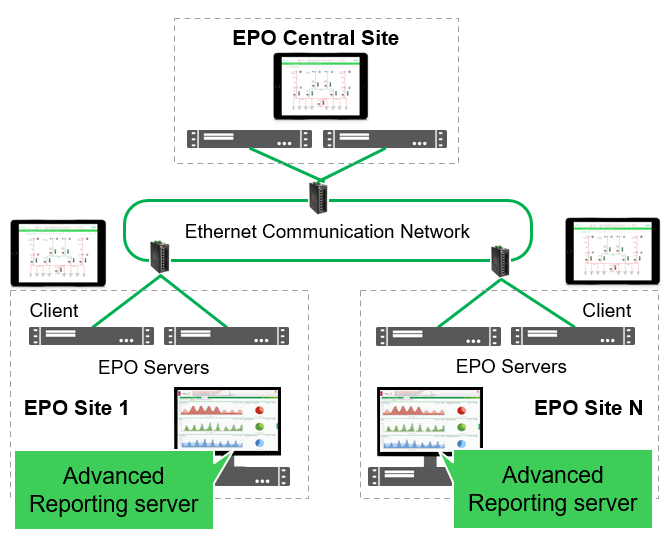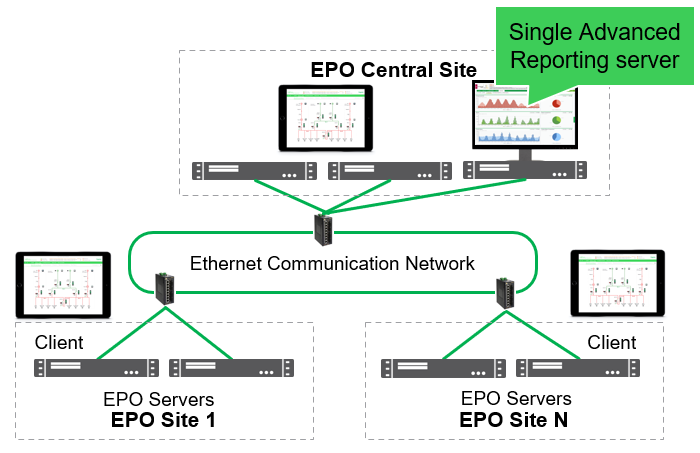Multi-site architectures
A multi-site architecture (or multi-clustered system) lets you scale your system as your needs evolve. It gives you the ability to monitor multiple systems from a central location. You can roll up data, graphics, and controls under a central HMI and you can add servers and clusters of servers to expand or distribute systems.

-
Monitor and control multiple independent systems from single runtime client for geographically co-located customers.
-
System organized into separate sites (also known as clusters).
-
Each site is controlled by local operators and supported by local redundant PO servers.
-
From central control site, one can simultaneously manage all the sites by viewing ‘federated’ data from multiple PO servers.
Licensing options
When using HTML5 web clients, you need to have a full PO Server license at Central Site. When using thick clients, you need to have a Client Access license at Central Site.
For more information on licensing, see License keys.
Design considerations
Geographically distributed systems
Power Operation requires a constant, high bandwidth (for example: Ethernet), and a reliable connection. We recommend against doing real-time control from the central control room in this architecture without having first performed a Final Acceptance Test (FAT) prior to hand-off.
NOTE: Ensure a stable communication between PO clusters and connected products that is always-connected and has sufficient bandwidth.
Devices in multiple time zones
Power Operation Servers can contain different devices that can be distributed across several sites or time zones. Instead of attempting to connect devices directly via a remote connection, a PO Server is placed at each site. In an architecture distributed across time zones, ensure that devices are configured for UTC time. Ensure a stable communication between PO clusters and connected products that is always-connected and has sufficient bandwidth.
Maintaining/upgrading the system
All PO sites must be using the same version of the PO software for communication between systems to occur. For example, Central Site cannot be running PSO 2020 with underlying sites running PO 2021.
Advanced Reporting and software modules
Architecture option #1 - Single Advanced Reporting server

Install Advanced Reporting at central site and connect directly to devices located at individual sites. Allows for central historical reporting across all sites. Ensure in this architecture that you do not exceed device limits on Advanced Reporting.
Architecture option #2 - Advanced Reporting at each individual site

Install Advanced Reporting at each individual site. Architecture would be considered if overall system size was beyond scale of single Advanced Reporting server.